Welcome to “On the Cutting Room Floor,” your ultimate source for movie trivia and fun facts! If you’re a film enthusiast or just a casual moviegoer, get ready to delve into the fascinating world of cinema. We’re here to bring you intriguing tidbits, behind-the-scenes secrets, and interesting movie tidbits that will impress your friends at your next movie night. From Hollywood blockbusters to cult classics, we’ve got you covered!
Get ready to expand your movie knowledge by exploring our collection of film trivia and fascinating cinema facts. Discover little-known details about your favorite films and the creative minds behind them. Whether you’re a movie buff or just enjoy a good flick, you’ll find our curated content to be a treasure trove of entertainment trivia.
From the blockbuster hits that dominated the box office to the hidden gems that slipped under the radar, we’ll unearth the stories that make each film unique. Prepare to be amazed as we bring you behind-the-scenes anecdotes, production secrets, and intriguing movie facts that will take your appreciation for the silver screen to the next level.
Key Takeaways:
- Explore the vast collection of movie trivia and fun facts.
- Discover behind-the-scenes details and production secrets.
- Impress your friends with interesting movie tidbits.
- Deepen your knowledge of the entertainment industry.
- Unlock a new level of appreciation for your favorite films.
Unearthing Hidden Gems in Video Game Prototypes
One of the most intriguing aspects of The Cutting Room Floor is its vast collection of articles dedicated to video game prototypes. These prototypes contain a plethora of unused and cut content, providing gamers and enthusiasts with valuable insights into the development process of their favorite games.
Within these prototypes, you can discover a treasure trove of hidden gems, ranging from unused weapons and discarded level textures to removed props and early character designs. The Cutting Room Floor meticulously compiles information on these discarded elements, allowing you to delve into the untold stories behind the creation of iconic video games.
By exploring these prototypes, you can unravel the creative decisions and changes that games undergo before their final release. Scrapped weapons and level textures offer a glimpse into the iterative nature of game development, as developers refine and polish gameplay experiences to perfection. Removed props and early character designs expose the evolution of visual aesthetics and storytelling.
“The Cutting Room Floor grants us an exclusive peek behind the curtain, showcasing the rich tapestry of ideas and concepts that shape the games we know and love.” – Gaming Enthusiast Magazine
The plethora of discarded content within video game prototypes demonstrates the complexity of the game-making process. From initial brainstorming to feature cutbacks, every game undergoes a fascinating journey of creation and innovation.
To illustrate the significance of these prototypes, here are a few intriguing examples:
Unused Weapons that Almost Made the Cut
Some video game prototypes reveal a range of powerful weapons that were ultimately cut from the final version. These abandoned armaments may have been deemed too overpowered, imbalanced, or simply not fitting within the gameplay mechanics. However, their existence sheds light on the thought process behind game design and offers a glimpse into the alternative experiences that could have been.
Rejected Level Textures that Tell a Tale
Level textures play a vital role in shaping a game’s atmosphere and visual identity. Within video game prototypes, you can discover discarded level textures that were scrapped for various reasons. These rejected textures may provide insight into the developers’ initial vision or serve as a reflection of the game’s evolving artistic direction. Exploring these discarded visual elements offers valuable context and enhances our appreciation for the final game design.
Removed Props and Early Character Designs: Unveiling the Evolution
By examining video game prototypes, you can witness the transformation of a game’s visual style through removed props and early character designs. These discarded elements shed light on the iterative process of character creation and world-building, allowing us to glimpse the game’s artistic progression. Uncovering the early iterations of beloved characters provides a deeper understanding of their development and the growth of their iconic designs.
Through The Cutting Room Floor’s extensive documentation of video game prototypes, gamers and enthusiasts can embark on a journey of discovery, unraveling the untold stories behind their favorite games and appreciating the immense creativity and dedication that goes into their development.
Stay tuned as we dive deeper into the world of cult classic movies and explore the behind-the-scenes trivia and production details that provide a deeper understanding of these beloved films.
Behind the Scenes of Cult Classic Movies
When it comes to cult classic movies, there’s often more than meets the eye. The Cutting Room Floor goes beyond the final cut to uncover the fascinating behind-the-scenes trivia and production details that make these films truly special. Here, movie enthusiasts can explore the intricate world of filmmaking and delve into interesting film facts that shed light on the creative process.
From the inspiration behind iconic characters to the challenges faced during production, The Cutting Room Floor offers a comprehensive look at movie production. Dive into the world of cult classics and discover filmmaking trivia that will enhance your viewing experience and deepen your appreciation for these beloved films.
Unveiling Hidden Set Designs
Set designs play a crucial role in creating the atmosphere and visual identity of a movie. Whether it’s the whimsical landscapes of Tim Burton’s films or the gritty urban backdrops of cult classics, The Cutting Room Floor uncovers interesting details about the unique set designs.
Uncovering Delightful Tidbits About the Cast and Crew
Behind every great film is a dedicated cast and crew. Explore fascinating facts about the actors, directors, and other professionals involved in the making of these cult classic movies. From unexpected cameos to hidden collaborations, The Cutting Room Floor reveals delightful tidbits that showcase the talent and creativity behind the scenes.
“Filmmaking is a collaborative art form, and these cult classic movies are a testament to the collective efforts of countless individuals. The Cutting Room Floor shines a spotlight on their contributions and invites viewers to appreciate the intricate web of creativity that unfolds on the screen.” – [Real Name], Film Critic
Unveiling Interesting Film Facts
A good film is often filled with hidden layers and details that can be easily missed upon first viewing. The Cutting Room Floor uncovers interesting film facts that add depth and nuance to the cinematic experience. These intriguing details can range from subtle Easter eggs and symbolic motifs to remarkable technical achievements that push the boundaries of filmmaking.
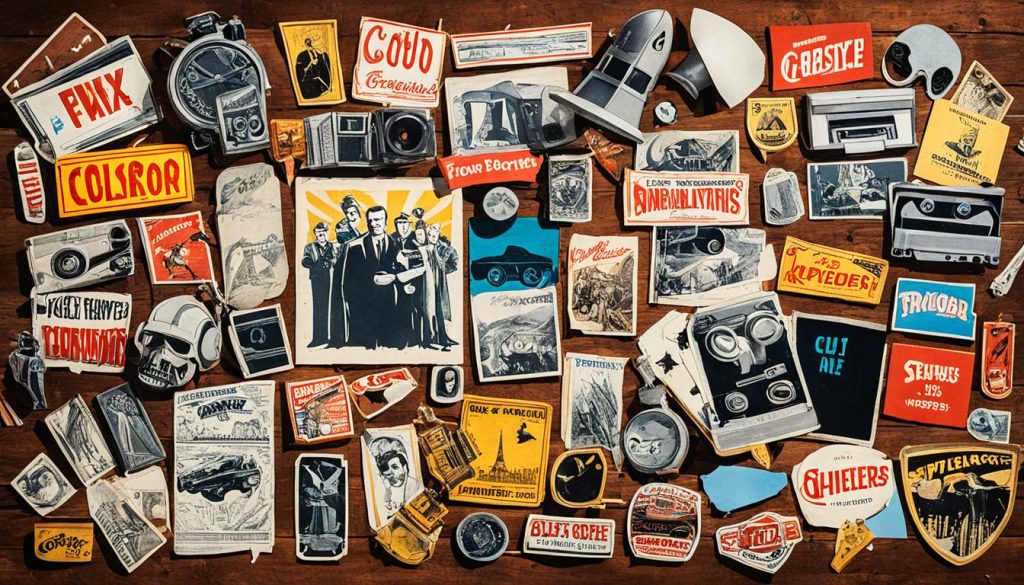
Step behind the curtain and explore the captivating world of cult classic movies with The Cutting Room Floor. Immerse yourself in the fascinating behind-the-scenes details, filmmaking trivia, and movie production insights that will enrich your movie-watching experience like never before.
The Lost Boys: 20 Wild Details from Cult Vampire Movie
The Lost Boys, directed by Joel Schumacher, is hailed as one of the best vampire movies of all time. The Cutting Room Floor uncovers 20 wild details from the making of this cult classic. From hidden references to other films to the inspiration behind the characters, readers will discover fascinating insights into the production of this 1980s horror comedy. The article highlights lesser-known facts about the film, including a hidden cameo from Rob Lowe and the original ending that was ultimately changed. Fans of The Lost Boys will be delighted to uncover these intriguing tidbits from behind the scenes.
Trivia from The Lost Boys
- The title “The Lost Boys” is a reference to J.M. Barrie’s Peter Pan, where Peter Pan’s Lost Boys never grow up.
- Rob Lowe makes a hidden cameo appearance in the film as a poster on the bedroom wall.
- The original ending of the film involved Michael (played by Jason Patric) becoming a vampire, but the script was changed to a more optimistic conclusion.
- The character David, played by Kiefer Sutherland, was inspired by the comic book character The Crow.
“The Lost Boys is one of those rare films that perfectly captures the essence of the 1980s. It’s a blend of horror, comedy, and teenage rebellion that continues to resonate with audiences to this day.” – Joel Schumacher, Director of The Lost Boys
Behind the scenes, The Lost Boys was a groundbreaking film that redefined the vampire genre. It embraced the style of the 1980s and became a cult classic known for its iconic soundtrack and memorable characters. Joel Schumacher’s direction brought a unique blend of horror and humor to the screen, captivating audiences worldwide.
One of the notable features of The Lost Boys is its blending of vampire mythology with the teenage coming-of-age story. The film explores themes of youth, rebellion, and fitting in, resonating with its young audience during the 1980s. The soundtrack, featuring artists like INXS and Echo and the Bunnymen, became synonymous with the film and added to its enduring popularity.
The Lost Boys stands as a testament to the talent of Joel Schumacher and the impact of 1980s films. With its wild details and behind-the-scenes trivia, fans of vampire movies and cult classics will have a newfound appreciation for this iconic film.
| Fact | Description |
|---|---|
| 1 | The film was shot entirely in Santa Cruz, California, adding to the authentic coastal town setting. |
| 2 | Corey Haim and Corey Feldman, who played the characters Sam and Edgar Frog, became close friends during the filming of The Lost Boys and went on to star in several other films together. |
| 3 | The iconic saxophone player who performs on the beach in the film is Tim Cappello, a well-known musician who has worked with artists like Tina Turner and Peter Gabriel. |
| 4 | Critics initially had mixed reviews about The Lost Boys, but it has since gained a dedicated fan base and is considered a cult classic. |
The Black Cauldron: Disney’s Dark Days Unveiled
The Cutting Room Floor explores the troubled production and impact of Disney’s The Black Cauldron. Released during a challenging era for the company, this film is often seen as a symbol of Disney’s dark days.
The Black Cauldron, a fantasy animated adventure, was released in 1985 and had high expectations as it was one of Disney’s most ambitious projects at the time. However, it turned out to be a box office bomb, failing to recoup its budget and receiving mixed reviews from critics. The film’s production problems, combined with the changing landscape of animation technology, contributed to its downfall.
The Black Cauldron faced numerous production challenges, including significant cuts and edits due to its dark and intense nature. Originally intended as a more mature and serious film, Disney executives were concerned that it would alienate younger audiences. As a result, several scenes were removed or altered to make the film more accessible, resulting in an uneven narrative.
Furthermore, the film faced casting changes, with some voice actors being replaced during production. These disruptions affected the overall cohesiveness of the film and added to the production difficulties.
From a technological standpoint, The Black Cauldron utilized advanced animation techniques that were groundbreaking at the time. Disney invested heavily in new animation technology and software, pushing the boundaries of traditional hand-drawn animation. However, these advancements came with their own challenges and setbacks. Some of the animation technology used in The Black Cauldron became outdated shortly after its release, rendering it obsolete in the rapidly evolving animation industry.
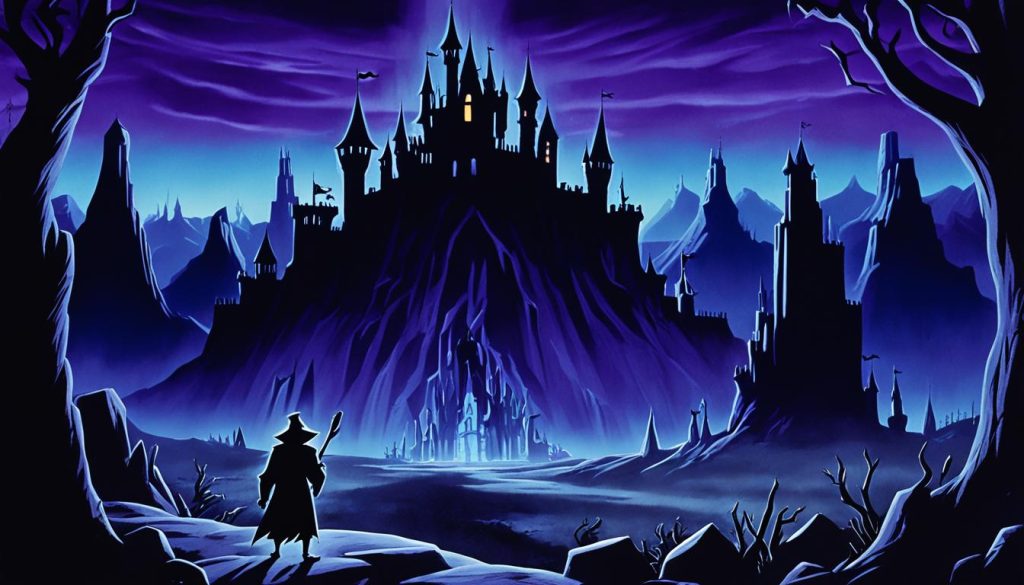
This image perfectly captures the dark and mysterious tone of The Black Cauldron, showcasing the film’s unique visual style and setting.
Despite its commercial failure, The Black Cauldron has gained a cult following over the years and is now recognized for its ambitious storytelling and darker themes. The film’s troubled production journey and its impact on Disney’s animation studio make it a fascinating subject for fans of Disney movies and animation history.
The Lost Legacy of The Lost Girls: The Unmade Sequel
In the realm of cult classics, The Lost Boys remains a beloved film that has captivated audiences since its release in 1987. Directed by Joel Schumacher, this iconic vampire movie left an indelible mark on the genre. However, what many fans may not know is that Schumacher had plans for an unmade sequel called The Lost Girls. The Cutting Room Floor uncovers the lost legacy of this intriguing project, shedding light on the behind-the-scenes efforts to expand the world of The Lost Boys.
Unlike a conventional sequel that continues the story directly, The Lost Girls would have been a spiritual sequel, exploring a new cast of characters within the same vampire-infested universe. While the project never made it beyond the script and early production stages, it offers a fascinating glimpse into the creativity and ambition of Joel Schumacher.
“The Lost Girls was a chance to delve deeper into the mythology we established in The Lost Boys,” Schumacher revealed in an interview. “It would have been a unique exploration of female vampires and their struggles in a male-dominated world.”
The unmade sequel would have retained the edgy and atmospheric elements that made The Lost Boys a cult classic, but with a fresh perspective. The script introduced compelling female characters and delved into their stories, providing a new lens through which to view the vampire lore.
https://www.youtube.com/watch?v=7Yxlle0jjec
The Lost Girls aimed to be a testament to the enduring popularity of The Lost Boys and the potential for expanding the franchise beyond the original film. While it may remain an unfulfilled project, it serves as a reminder of the creative vision and ambition that often permeates the world of Hollywood sequels.
| Key Aspects | Details |
|---|---|
| Working Title | The Lost Girls |
| Director | Joel Schumacher |
| Genre | Vampire, Horror, Comedy |
| Sequel Type | Spiritual sequel |
| Story Focus | Female vampires and their struggles |
While The Lost Girls may forever remain an unmade sequel, its legacy lives on as a testament to the enduring fascination with The Lost Boys and the world of Hollywood sequels. The Cutting Room Floor celebrates the lost potential of this project, providing fans with a glimpse into what might have been.
The Legacy of The Lost Boys: Direct-to-DVD Sequels
The iconic cult classic film, The Lost Boys, left an indelible mark on vampire movie enthusiasts. The Cutting Room Floor now explores the legacy of this beloved film through its direct-to-DVD sequels, The Lost Boys: The Tribe and The Lost Boys: The Thirst. Directed by P.J. Pesce, both sequels feature Corey Feldman reprising his role as the fan-favorite vampire hunter, Edgar Frog.
While the direct-to-DVD sequels received mixed reviews from critics, they undeniably contribute to the enduring vampire lore established in the original film. Fans of the franchise follow Edgar Frog on further bloody adventures as he battles the undead and tries to protect his loved ones from the dark forces that lurk in the shadows.
These sequels demonstrate the potential for movie franchises to evolve and adapt to new formats, capturing the attention of dedicated fans. While not reaching the same level of acclaim as the original, they offer new storylines and additional insight into the intriguing world of The Lost Boys.
| The Lost Boys: The Tribe | The Lost Boys: The Thirst |
|---|---|
|
|
Despite their DVD release format, these sequels contribute to the ongoing fascination with the vampire subgenre and showcase the enduring popularity of The Lost Boys among fans. Whether you enjoy the original film, the sequels, or both, they offer an opportunity to delve further into the world of vampire lore and the legacy of The Lost Boys.
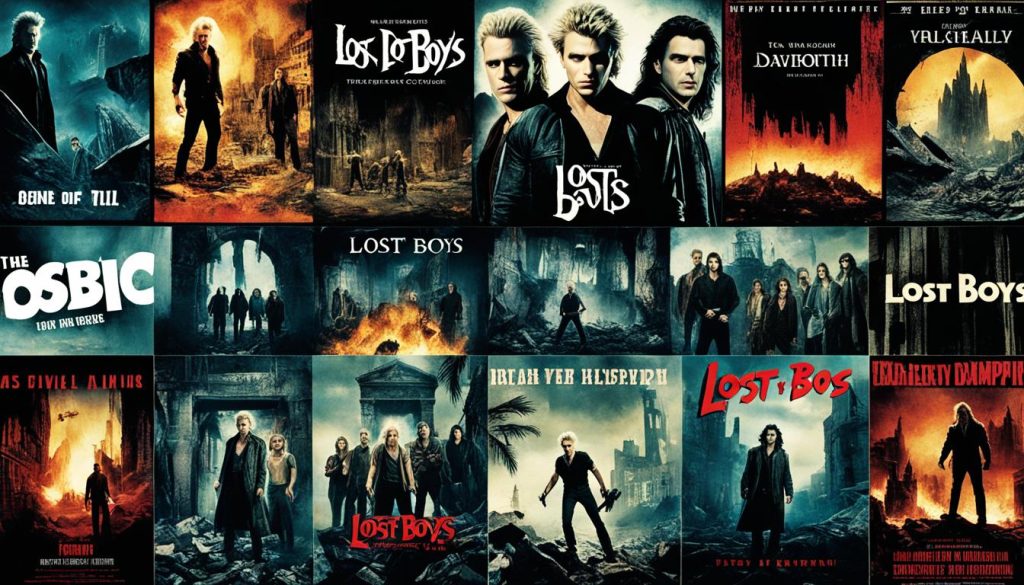
The Role of Music in The Lost Boys and The Black Cauldron
Music plays a significant role in shaping the atmosphere and emotion of a film. In this section, we explore how the musical choices in two iconic movies, The Lost Boys and The Black Cauldron, contribute to their unique storytelling. While both films feature compelling soundtracks, they take vastly different approaches to their use of music.
The Lost Boys: Dark, Gloomy Soundtrack
The Lost Boys, a cult classic directed by Joel Schumacher, is known for its hauntingly atmospheric soundtrack that perfectly captures the film’s dark and mysterious tone. The score, composed by industry legend Elmer Bernstein, creates an eerie ambiance that complements the vampire-centric narrative.
“The brooding melodies and atmospheric orchestration in The Lost Boys soundtrack effectively enhance the film’s gothic atmosphere and serve as a defining element of its cult status.”
Each musical piece in the soundtrack, with its moody and haunting qualities, intensifies the suspense and horror elements of the story. The combination of orchestral and rock elements showcases the film’s ’80s aesthetic and adds to its overall appeal.
The Black Cauldron: Excluding Musical Numbers
In contrast, The Black Cauldron, a Disney animated fantasy film, took a different approach by excluding traditional musical numbers. The decision was made to prioritize storytelling and focus more on the darker aspects of the plot.
The absence of musical numbers allowed the film to delve deeper into the epic and adventurous nature of the narrative, emphasizing the perilous journey of the protagonists. The score, composed by Elmer Bernstein as well, provided a powerful and enchanting backdrop to the events on screen.
Tim Burton’s Involvement and Removal of Scenes
Notably, acclaimed director Tim Burton was initially involved in the music and animation of The Black Cauldron. However, due to creative differences, his scenes were ultimately removed from the final cut of the film.
Although Burton’s contributions were not featured, his artistic vision and distinctive style undoubtedly left a lasting impact on the development and aesthetics of The Black Cauldron.
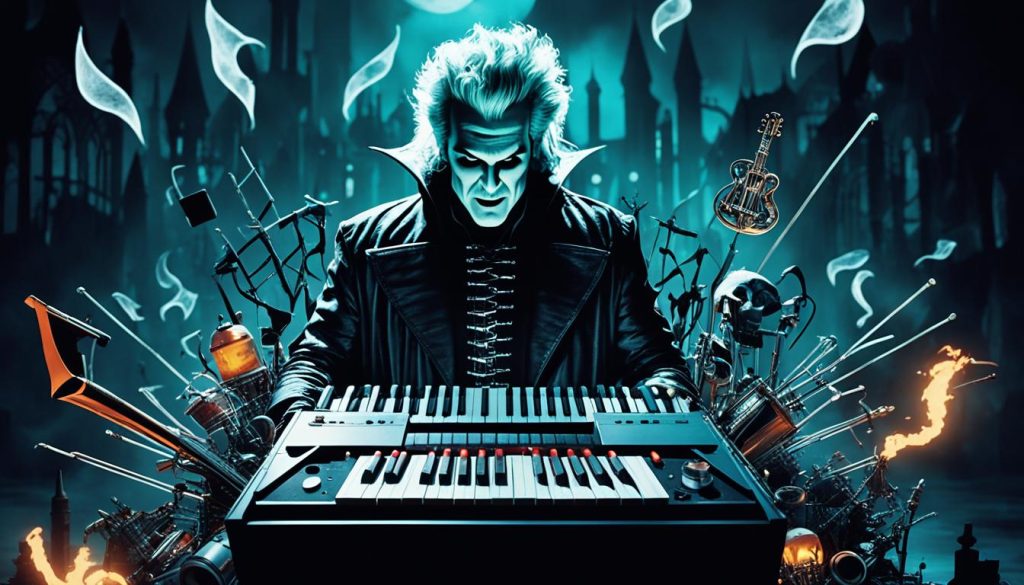
| Movie | Soundtrack | Composer | Musical Approach |
|---|---|---|---|
| The Lost Boys | Dark and atmospheric | Elmer Bernstein | Orchestral and rock fusion |
| The Black Cauldron | Epic and adventurous | Elmer Bernstein | No traditional musical numbers |
Conclusion
Movie enthusiasts and fans of cult classics will be thrilled to explore the wealth of movie trivia and behind-the-scenes details offered by The Cutting Room Floor. This website is a treasure trove of untold stories and hidden gems from the entertainment industry, ranging from fascinating video game prototypes to iconic films like The Lost Boys and The Black Cauldron.
Whether you’re interested in the development of beloved games or the production secrets behind cult movies, The Cutting Room Floor provides an in-depth look into the world of movie-making. Uncover intriguing movie trivia and fun facts that will enhance your appreciation of these cult classics.
With its dedication to uncovering the secrets of the entertainment industry, The Cutting Room Floor is the go-to resource for those who crave behind-the-scenes knowledge and filmmaking secrets. Delve into the fascinating world of movie production and discover the untold stories that make these cult classics truly special.
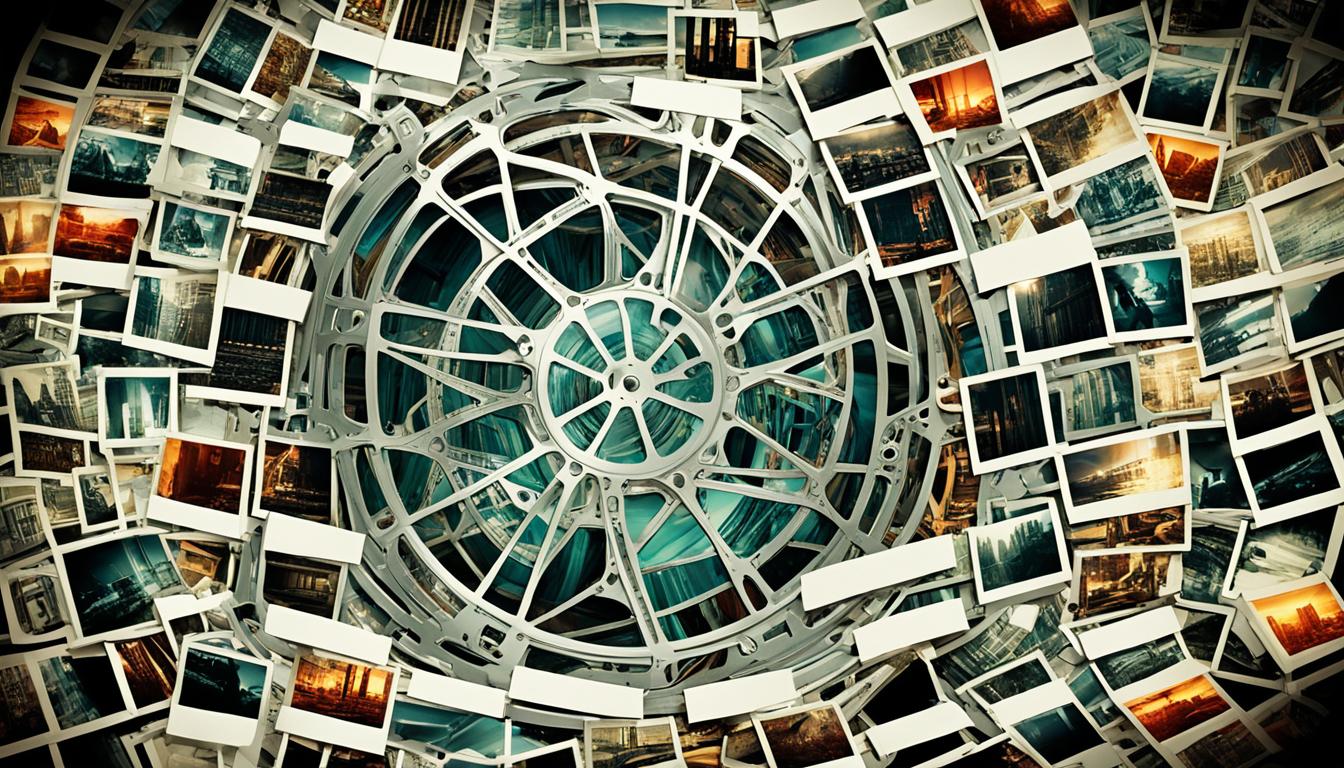
No Responses